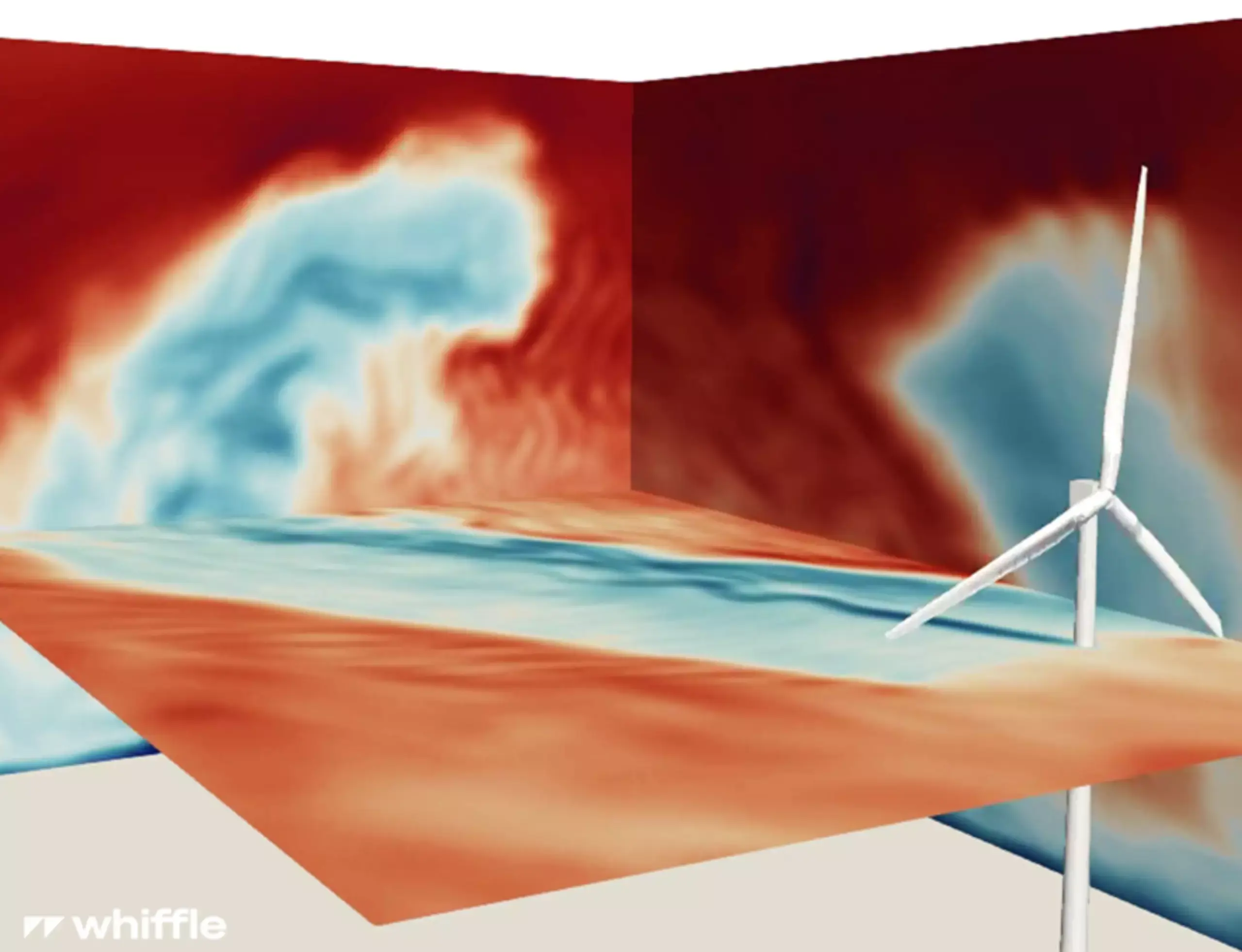- PartnerETP-UNOPS
- CountryIndonesia
- Start2024
For the ETP-UNOPS project Pondera has investigated possibilities for onshore wind energy development in Indonesia. Pondera used innovative wind modelling to search for potential development areas.

Figure 1: Windspeed behind a wind turbine as modelled by LES. In blue the low wind speeds, in red the high wind speeds. The wind turbine converts the wind energy into electricity and causes a wake effect, which includes the increase of turbulence behind the wind turbine.
Project goal
- The Indonesian Ministry of Energy aims at enhancing the interest and investments in wind energy with this study.
Project background
The current landscape of the Indonesian wind energy sector is characterized by multiple stakeholders with various interests, a strong competition and uncertainty among developers. The regulations and processes to move forward with projects are unclear. For developers and financers this creates an environment with large uncertainties and risks, putting pressure on the investments and development of wind energy projects. This is why the Indonesian Ministry of Energy has taken action, launching the project “Wind Energy Development in Indonesia: Investment Plan”, with the goal to raise interest and investments in the wind energy sector. The project is managed by the Southeast Asia Energy Transition Partnership (ETP), a multi-donor partnership working to facilitate sustainable energy transition in Southeast Asia. ETP is formed by government and philanthropic partners and managed by the United Nations Office for Project Service (UNOPS). The whole project was carried out by Pondera within one-and-a-half years.
Sub-projects
The project is split up into four subprojects. Combined the subprojects provide a complete picture of the development, challenges and potential for the wind energy sector in Indonesia.

Unique approach: LES modelling
As part of the project step Mapping of Onshore Wind Energy Potential, the energy yield for several sites had to be defined. These sites were initially selected based on their wind speed in the global wind atlas. Pondera used a unique approach to further define the wind climate. This was necessary because for the project sites no public wind measurements were available. Additionally, the regular wind models, such as ERA5 or EMD-WRF, provide various wind climates, which introduces a big uncertainty for Indonesian projects. The complex topography of various sites leads to local differences in wind speed that are not included in the regular models. In order to make a reliable wind resource assessment (WRA) and energy yield calculations for the eight sites, as input for the business case, Large Eddy Simulations (LES) were used. With the ASPIRE model from Whiffle the wind climate was mapped on a 100x100m horizontal resolution (see Figure 2). This includes the mapping of local wind speed-ups in complex terrains, which are missed by the regular wind models due to their limited resolution. With the LES model new potential development sites were mapped. These new local wind climates were used as input for the WindPRO analysis to calculate the energy yield.
The LES modelling enabled Pondera to determine the technical and economic feasibility of the eight sites in an early project phase. Now, well-weighted development discissions per site can be made by investors and developers which require substantial investments. These include costs for wind measurements, logistic studies, geotechnical tests and acquisition of land.

Figure 2: Windmaps of a complex location in Indonesia (blue = low wind speed, red = high wind speed). Comparison between the Global Wind Atlas, CFD approach including wind measurements and high resolution LES modelling without measurements.
The complete results of the project can be accessed via: https://www.energytransitionpartnership.org/publication/.
 Energy Transition Partnership - UNOPS
Energy Transition Partnership - UNOPS
